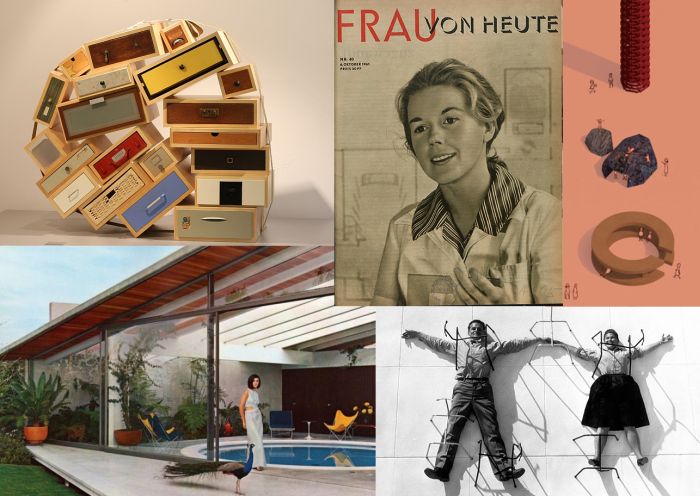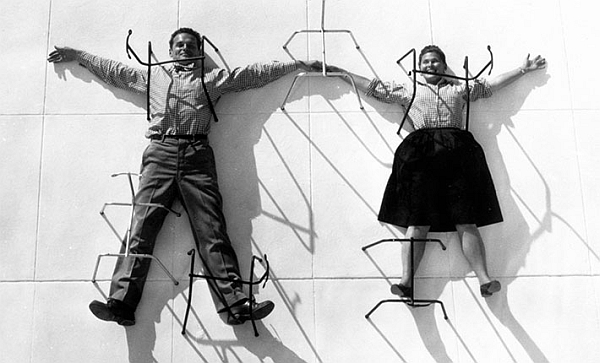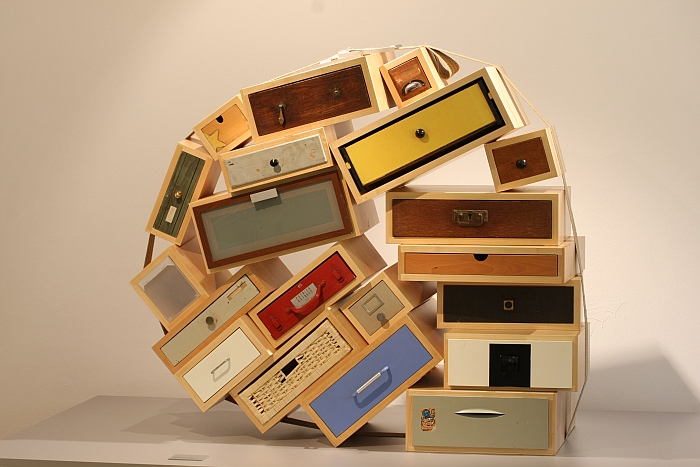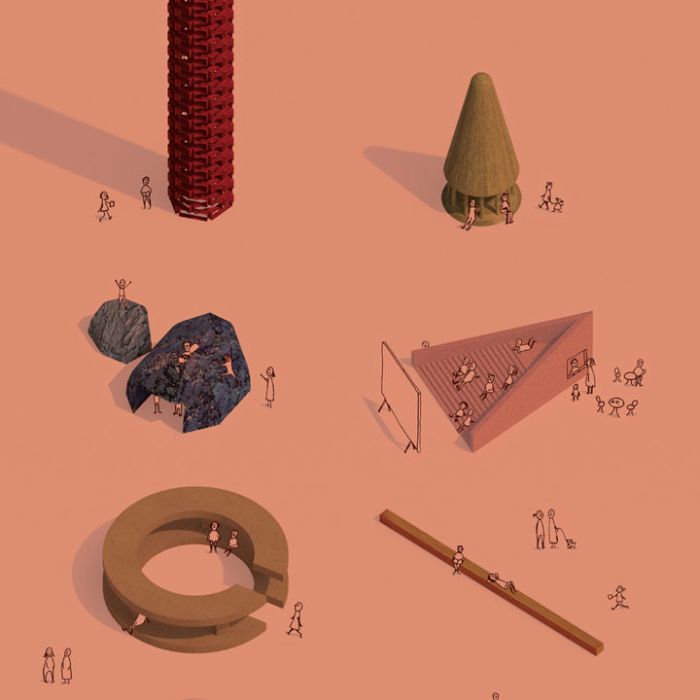5 New Design Exhibitions for September 2017
The September architecture and design exhibition recommendations are arguably the cruellest to write: the fact that the majority of the exhibitions end in the depths of the European winter meaning that as we sit here hoping that summer keeps going just a little, little, longer…. we’re forced to think about winter jackets and gloves.
And so before things get that far, best get out there and visit an exhibition!! Our five recommendations for September 2017 feature new exhibitions in Weil am Rhein, Los Angeles, Utrecht, Frankfurt and Malmö…….
“An Eames Celebration” at the Vitra Design Museum, Weil am Rhein, Germany
Typical! You wait twenty years for an Eames exhibition in Weil am Rhein and then four come along at once!!!
Promising one of the most inclusive and fulsome explorations of the work and legacy of Charles and Ray Eames ever staged, the Vitra Design Museum are not only calling on the depth of their collection, but the volume of the Vitra Campus, to stage four parallel Eames exhibitions.
The main exhibition Charles & Ray Eames. The Power of Design is based on the Barbican Museum London’s exhibition The World of Charles and Ray Eames, expanded and reconfigured for the occasion, and which promises some 500 objects covering not only the full gambit of the pair’s works, but also their lives, motivations and relationships with contemporaries.
Arguably a comprehensive Eames exhibition in its own right, The Power of Design is “supported” by three satellites: Ideas and Information. The Eames Films in the Zaha Hadid Fire Station, which will not only present a selection of the Eames’s films but aims to explore the Eames’s contribution to both film and the use of new media in the dissemination of knowledge and information; Play Parade. An Eames Exhibition for Kids in the Vitra Design Museum Gallery; and Kazam! The Furniture Experiments of Charles & Ray Eames in the Schaudepot which aims to explain and explore how the Eames’s developed their furniture designs.
For us one of the most interesting factors will be, with so much Eames in one place – and lest we forget the VitraHaus is also extensively furnished with Eames’ designs, and features the Lounge Chair Atelier – can the Vitra Design Museum prevent turning the Vitra Campus into an Eames Theme Park……?
An Eames Celebration runs at the Vitra Design Museum, Charles-Eames-Str. 2, 79576 Weil am Rhein from Saturday September 30th until Sunday February 25th (Play Parade. An Eames Exhibition for Kids is on show from Saturday September 9th until Sunday February 11th
“Found in Translation: Design in California and Mexico, 1915–1985” at the Los Angeles County Museum of Art, Los Angeles, California, USA
In an earlier interview with Charles Eames’ grandson Eames Demetrios, he opined that for him the defining moment in Charles Eames’ career was the months he spent in Mexico in 1933/34, the experiences he had and the people he met influencing and informing both his subsequent work and, arguably most importantly, his approach to his work.
And Charles Eames wasn’t alone. The (hi)story of architecture and design in California and that of architecture and design in Mexico is one of reciprocal influence, inspiration, teaching, learning: exchange. Arguably because California and Mexico were once one and the same, and cultural empathy knows no physical borders.
Which of course makes the Los Angeles County Museum of Art’s decision to present an exhibition exploring how “interconnections between California and Mexico shaped the material culture of each place, influencing and enhancing how they presented themselves to the wider world” at a time when the US President is planning a dirty great wall between the two, all the more commendable. And thoroughly important.
Focussing on four subject areas – Spanish Colonial Inspiration, Pre-Hispanic Revivals, Folk Art and Craft Traditions, and Modernism – and promising some 250 works by creatives such as Richard Neutra, Luis Barragán, Clara Porset, as well as Charles and Ray Eames, Found in Translation sounds like being an excellent excuse to visit Los Angeles. If you needed one.
Found in Translation: Design in California and Mexico, 1915 –1985 runs at the Los Angeles County Museum of Art, 5905 Wilshire Blvd. Los Angeles CA 90036 from Sunday September 17th until Sunday April 1st
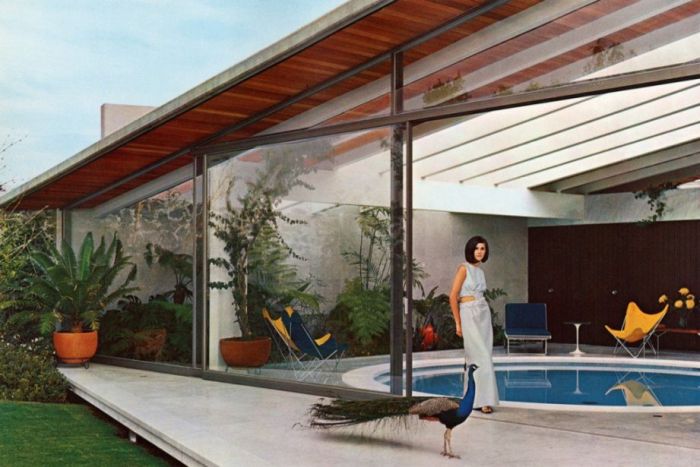
Francisco Artigas, House at 131 Rocas, Jardines del Pedre gal, Mexico City (photo by & © Roberto and Fernando Luna, Couretsy lacma)
“Early Droog: The early years of Droog Design” at Centraal Museum, Utrecht, Holland
The fact that anyone pays any attention to any contemporary design from Holland is arguably alone thanks to the portfolio of products released by Droog Design, whereby Droog is so much more than just a design brand and much more a platform, publisher, laboratory ….. and portfolio of products by the likes of Niels van Eijk, Richard Hutten, Jurgen Bey or Marcel Wanders.
Established in 1993 by art historian Renny Ramakers and designer Gijs Bakker, Droog is Dutch for dry, and the name succinctly conveys not only the humour inherent in much of the company’s output, but also the lack of showy pretence that is so intrinsic in the Droog approach.
The Centraal Museum Utrecht purport to have the world’s largest Droog collection, and with Droog approaching its quarter century, and that other great Dutch creative institution, De Stijl, celebrating its centenary, the Centraal Museum Utrecht will present 50 pieces from the Droog portfolio by way of celebration and reflection.
As far as we are aware there has never been major museal Droog retrospective, Early Droog doesn’t sound like being that, does however sound like being a thoroughly rewarding review of where Droog came from, where it is and thus by extrapolation where contemporary design in Holland is: all just a contentless pseudo-Droog imitation or a meaningful abstraction and development of that which Droog started?
Early Droog: The early years of Droog Design opens at the Centraal Museum, Agnietenstraat 1, 3512 XA Utrecht from Friday September 22nd and runs until Sunday December 3rd.
Frau_Architekt – Over 100 years of women in architecture at the Deutsches Architekturmuseum, Frankfurt am Main, Germany
Although our natural temperament is to shy away from anything that resembles gender studies, Frau_Architekt sounds like being not only an interesting but important contribution to debates around contemporary architecture. According to the Deutsches Architekturmuseum, currently 53% of architecture students in Germany are female, a figure reflective of the situation across Europe; yet the number of female architects in leading positions, and number of female architects of global renown, remains low. Of the 39 winners of the Pritzker Architecture Prize only three – Zaha Hadid, Kazuyo Sejima, Carme Pigem – are female. And Zaha Hadid the only solo female winner, the other two winning as part of partnerships.
The Y chromosome apparently coding for architectural competence.
Promising 22 case studies of German female architects starting with Emilie Winkelmann, who in 1907 became the first female German architect to establish her own office, Frau_Architekt aims to disprove the Y chromosome myth we just started, through both exploring and examining historical realities and developments, while also serving as a platform for discussions on the current situation and future scenarios. Principally in Germany, but by extrapolation, one assumes, everywhere.
And that, hopefully, without getting all programmatic on us.
Frau_Architekt – Over 100 years of women in architecture opens at the Deutsches Architekturmuseum, DAM, Schaumainkai 43, 60596 Frankfurt am Main on Saturday September 30th and runs until Sunday February 25th.
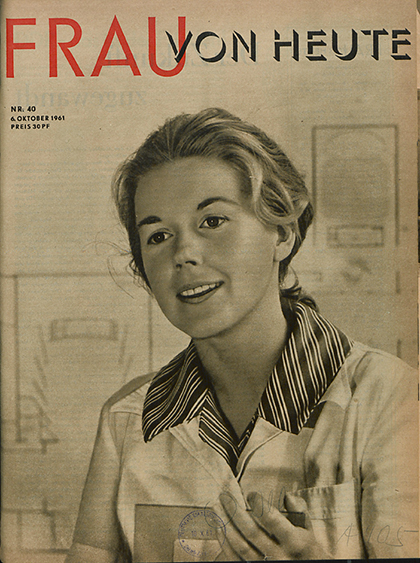
Architecht Iris Dullin-Grund on the front cover of “Die Frau von Heute” (1961) (Image courtesy Deutsches Architekturmuseum)
“Commoning Kits” at Form/Design Center, Malmö, Sweden
If one assumes, as we tend to, that urban development should be for the benefit of those who live in a particular city and/or community, why does it often not work? Why does it often go spectacularly awry? Can architects and urban planners create spaces that encourage, promote, foster, a sense of community and identity? That are democratic, sustainable and responsive? Or is that just a deluded illusion? And one that rarely comes cheap……
With the exhibition Commoning Kits the Form/Design Center Malmö aim to approach answers to such questions through the ideas of 13 architectural practices from Sweden, Norway and Denmark.
Although focussing on a planned development of Malmö’s Sege Park, as with all such projects, in the best case scenario the results should be universal and adaptable enough to be applied, directly or abstracted, in other locations.
Commoning Kits opens at Form/Design Center, Lilla Torg 9, 203 14 Malmö on Thursday September 7th and runs until Tuesday October 10th
Tagged with: Charles and Ray Eames, droog, Frankfurt, Los Angeles, Malmö, The Power of Design, Utrecht, Vitra, Vitra Design Museum, Weil am Rhein
